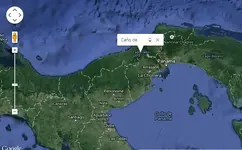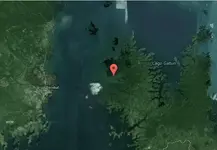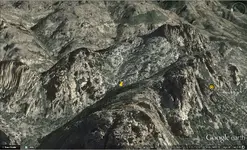Alessandro Filipepi, better known as Sandro Botticelli was an Italian painter of the Florentine school during the Early Renaissance or Quattrocento. Sandro was born at Florence in 1445 in a house in the Via Nueva, Borg' Ognissanti. This was the home of his father, Mariano di Vanni dei Filipepi, a struggling tanner. Sandro, the youngest child, derived the name Botticelli by which he was commonly known, not, as related by Giorgio Vasari, from a goldsmith to whom he was apprenticed, but from his eldest brother Giovanni, a prosperous broker, who seems to have taken charge of the boy and who for some reason bore the nickname Botticello or Little Barrel. Botticelli was first apprenticed to a goldsmith at an early age of 13, then, following the boy's wishes, his doting father set him to Fra Filippo Lippi who was at work frescoing the Convent of the Carmine. Lippo Lippi's synthesis of the new control of three-dimensional forms, tender expressiveness in face and gesture, and decorative details inherited from the late Gothic style were the strongest influences on Botiicelli. During his apprentice years Sandro was no doubt employed with other pupils upon the great series of frescoes in the choir of the Pieve at Prato upon which his master was for long intermittently engaged. The later among these frescoes in many respects anticipate, by charm of sentiment, animation of movement and rhythmic flutter of draperies, some of the prevailing characteristics of Sandro's own style. One of Sandro's earliest extant pictures, the oblong "Adoration of the Magi" at the National Gallery, London, shows him almost entirely under the influence of his first master. Botticelli quickly became recognized as a gifted artist all by himself. By the time he was 25, he was able to open a workshop dedicated to his own work.
In 1481, Botticelli was invited to Rome to take part in the painting of the Sistine Chapel. Sandro joined artists such as Perugino, Ghirlandaio and then Michelangelo in contributing to the most well known piece of Italian art. While there, Botticelli worked on several pieces in the Chapel. In all, Botticelli painted three large pieces, as well as seven papal portraits in the Sistine Chapel.
As Sandro grew older, his style underwent a remarkable change. Sandro became a follower of the monk Savonarola who was a prominent civic leader in Florence. He stressed giving up all worldly things. He was very charismatic and often spoke of death and God’s wrath upon the people. Many of Botticelli’s previous paintings were considered ungodly and were burned along with objectionable books and playing cards. When Savonarola’s popularity ended, he was burnt in the center of Florence. Many followers fled the city, but Botticelli stayed and continued to paint. Many of his works contained a very religious feel to them. Sandro included highly religious symbolism in his paintings; they seemed to be telling a story. Sandro became known as an excellent altarpiece painter and earned large amounts of money through those commissions.
Botticelli’s later years seemed to be a disturbing time for him. As times changed in Florence, Botticelli tried to keep up. He often took on difficult commissions that other painters turned down. His rotating style reflected that Botticelli was struggling as a painter. His paintings were full of emotion raging from violence to grace and compassion. Even though Sandro was trying to keep up his status as a painter, he was still recognized with the honor to be part of the committee that chose the spot where Michelangelo would place his statue David.
Sandro Botticelli died at the age of 65. Some say Sandro was poor and unaccomplished at his death. This could be attributed to the rising popularity of new and contemporary artists such as Michelangelo, Raphael and Leonardo Da Vinci. Even though his work is now thought to be among the most masterful of his time, his work lay forgotten for over 400 years after his death. Looking back at history, he now has the respect he earned through a lifetime of achievement. Sandro Botticelli contribution to the Italian Renaissance period was one of great distinction.
Botticelli quickly became recognized as a gifted artist all by himself. By the time he was 25, he was able to open a workshop dedicated to his own work.
http://historylink101.com/art/Sandro_Botticelli/index.htm


 Oroblanco, amigo, it was so slow the last couple days on any post I thought I would do something different, and then make myself about 20
Oroblanco, amigo, it was so slow the last couple days on any post I thought I would do something different, and then make myself about 20  and wake up and start talking about the seven caves
and wake up and start talking about the seven caves








 HEY AMIGO,
HEY AMIGO,  HAVE SOME
HAVE SOME  np
np


